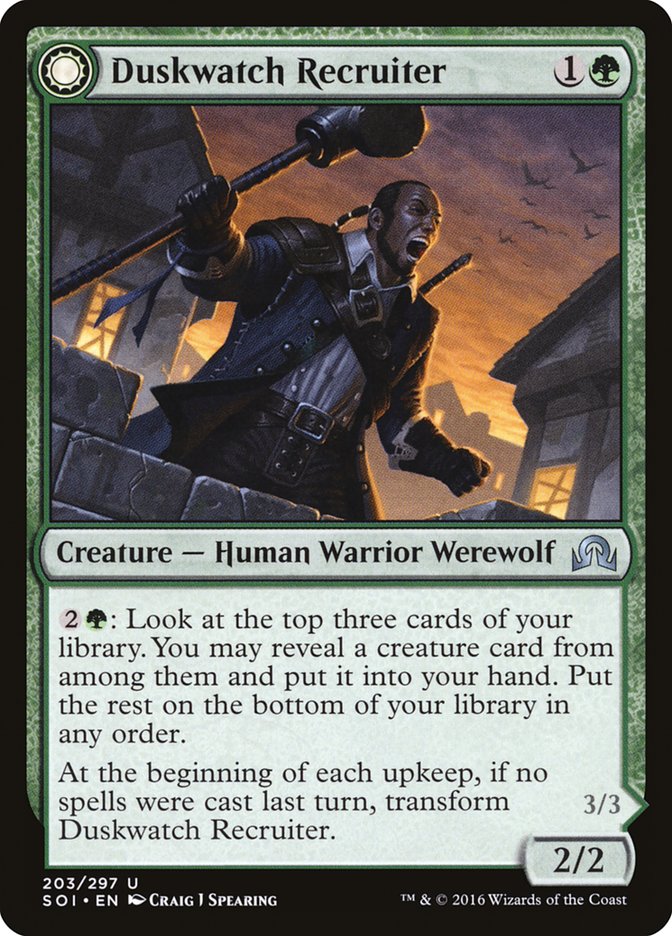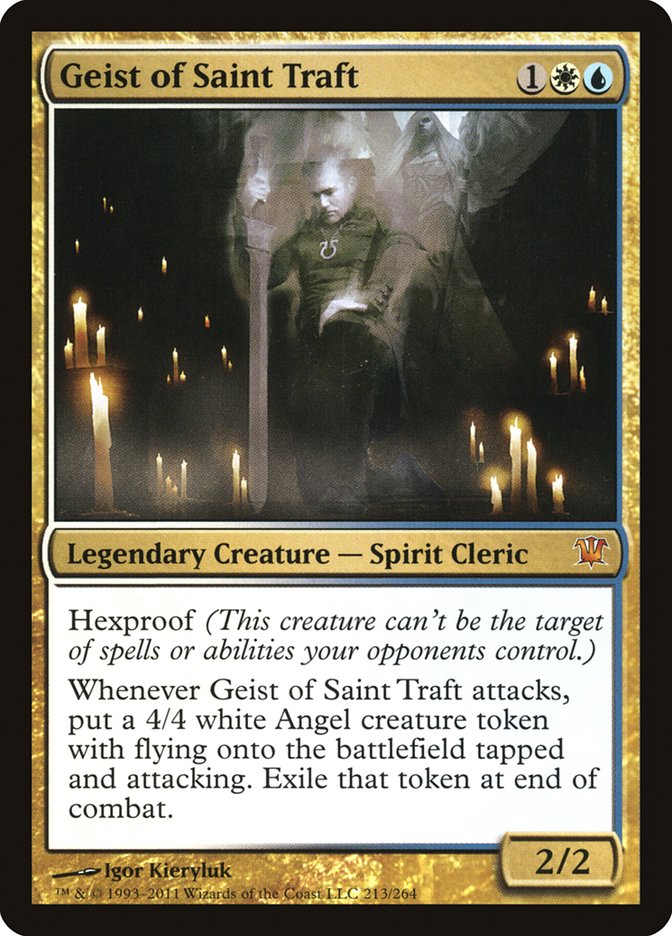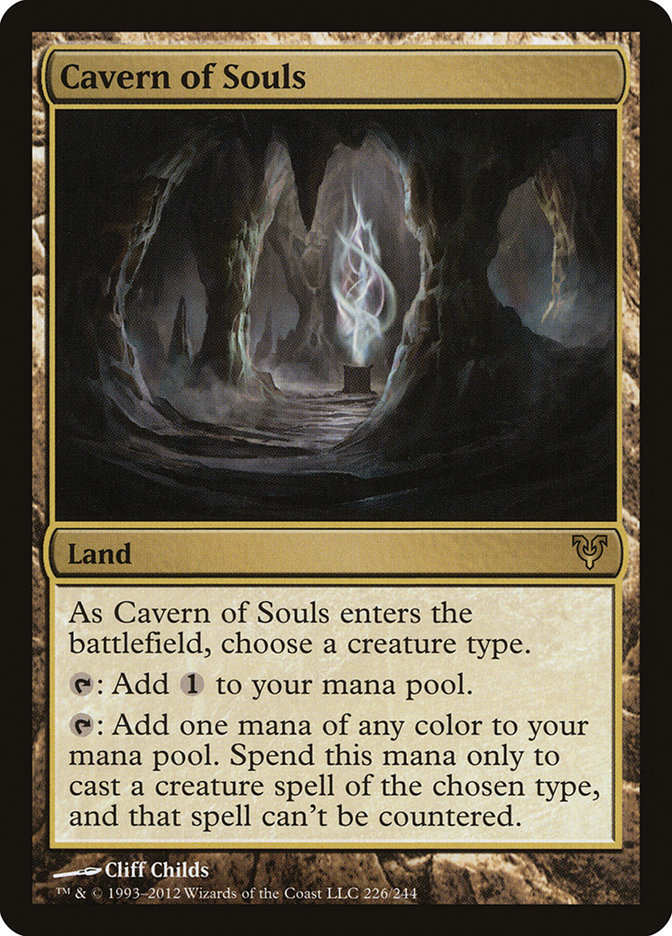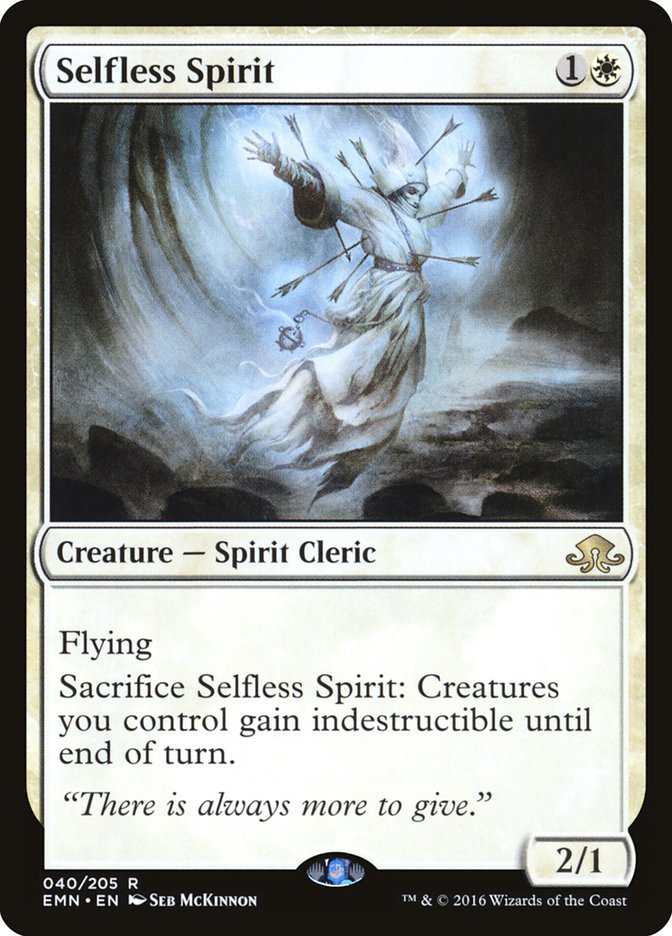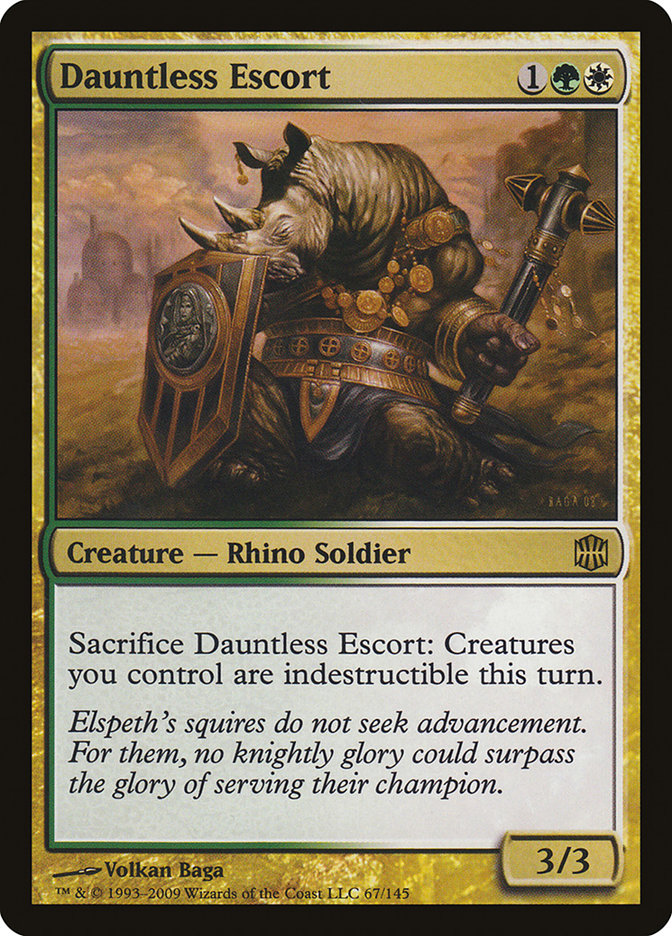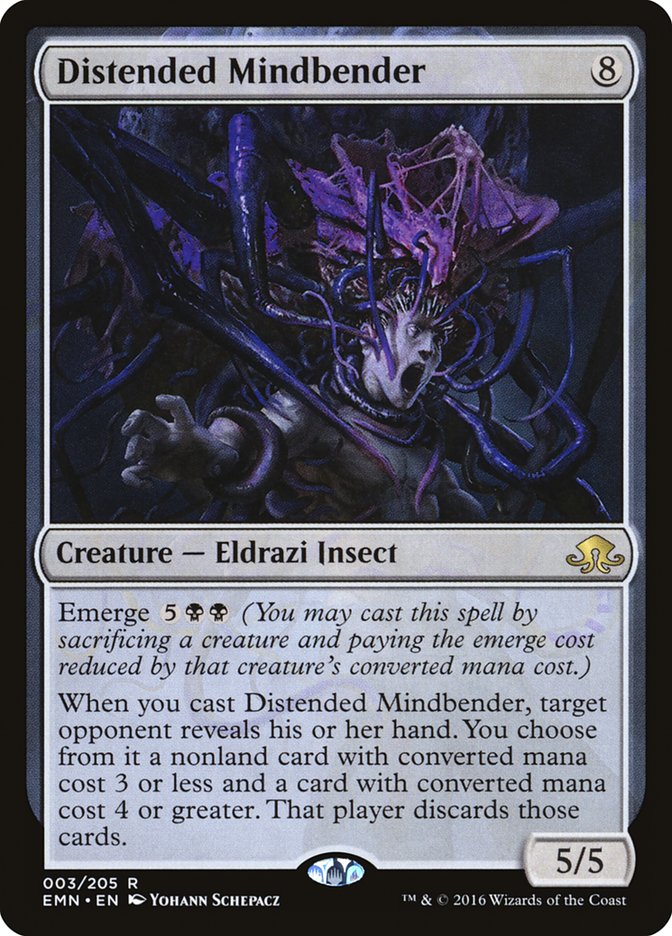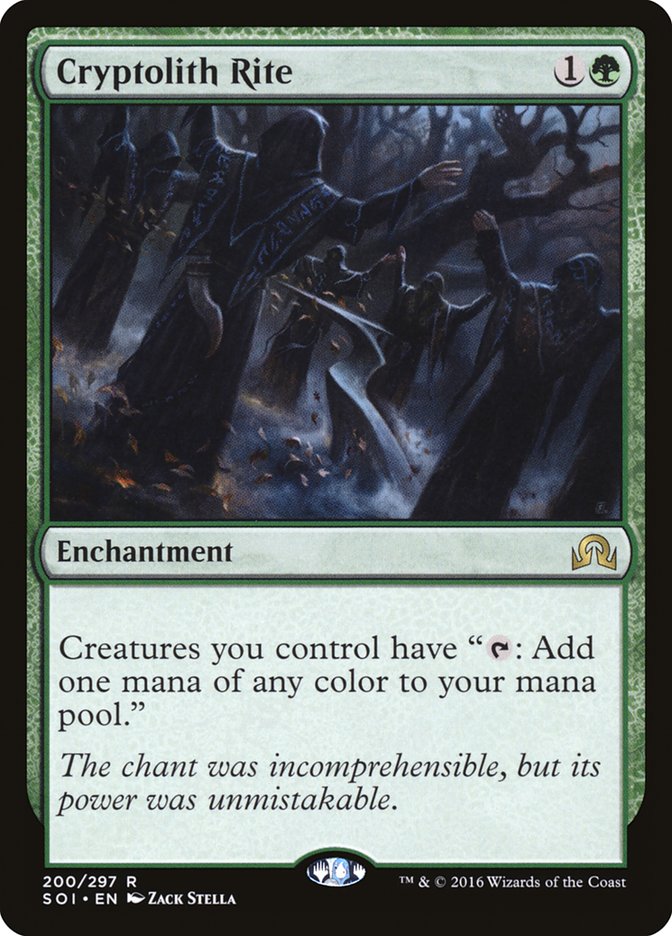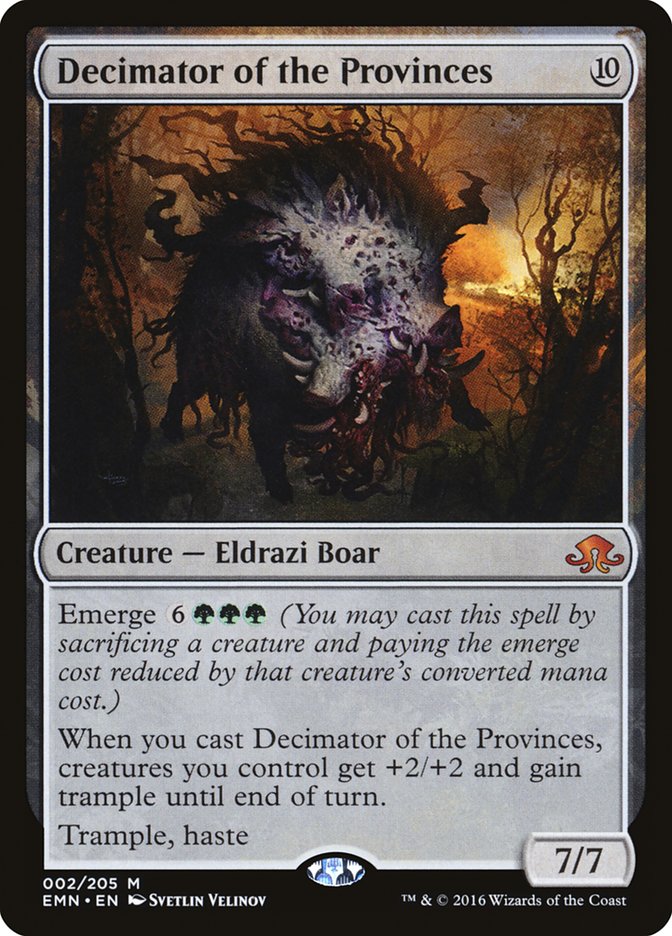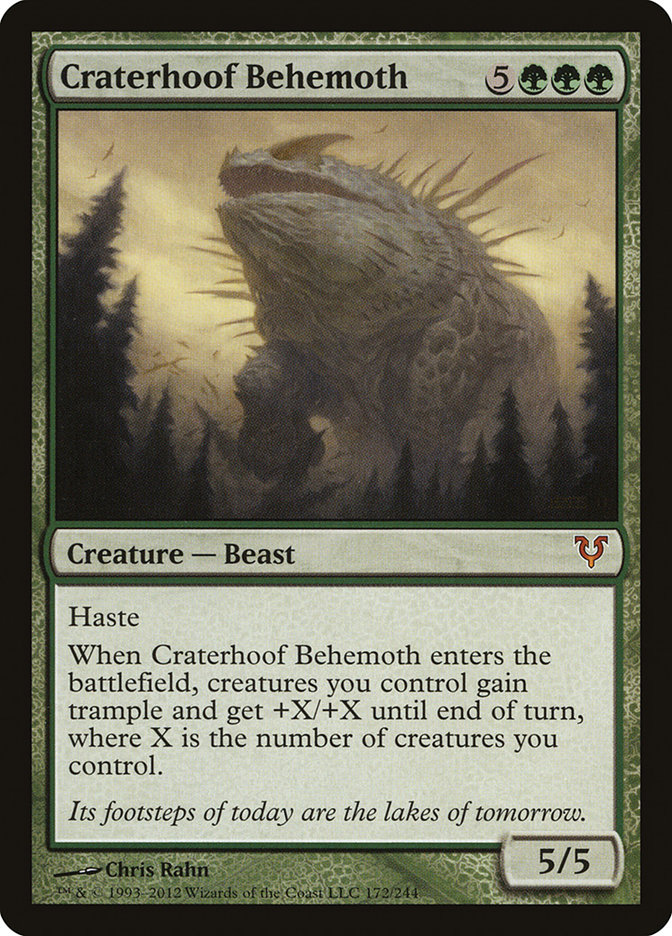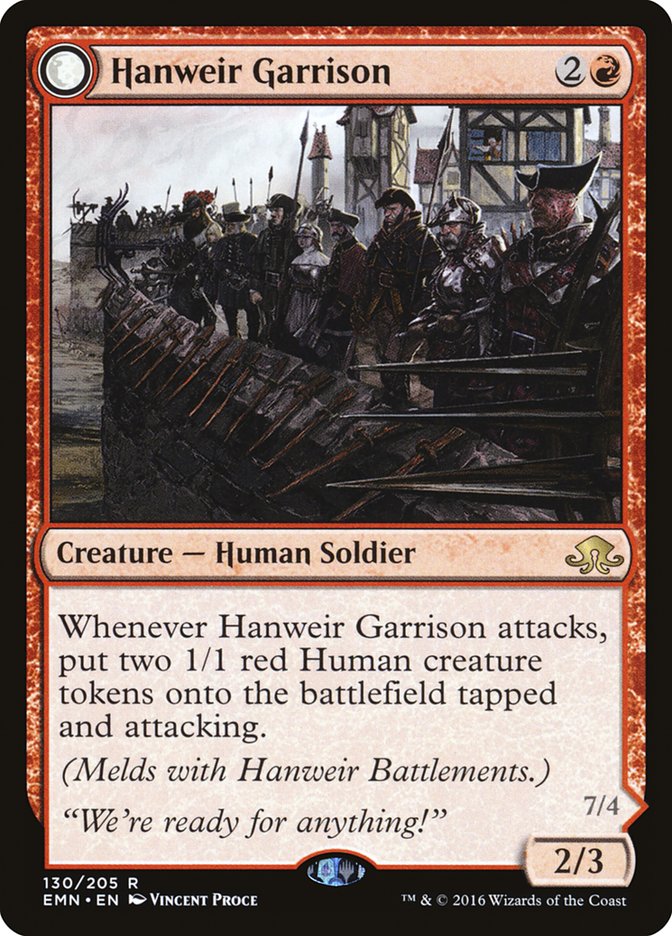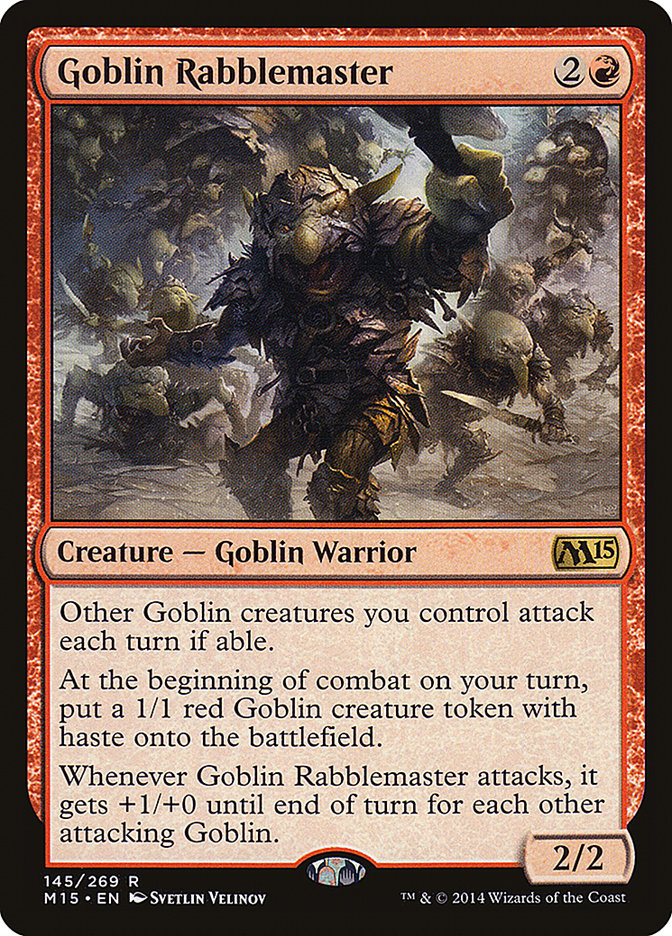So far, soooo good. The spoilers for Eldritch Moon keep rolling in, and boy is this set looking like a home run. It has enough rares and mythics to shake up Standard, and enough cards with Modern or Legacy potential to keep those less enthusiastic about Standard buzzing. We’ve gotten a lot of goodies that might build their own archetypes, while some cards just fit perfectly into existing decks.
I’m not the kind of person to go card-by-card and do a set review, but I will touch on a few of my favorites, as well as give you some sample decklists. I know it was only spoiled Wednesday, but it was spoiled early enough that we actually got to film a V.S video with it. I present the most annoying thing you’ll ever play against:
If you thought you hated Bant Company already, just wait until your opponent slams this onto the battlefield from Collected Company in response to your all-important Languish. The drawback of allowing them to play their spell if they’re able to remove Spell Queller can be tricky, but you can always use other methods of protecting it. But for the most part, Spell Queller will be a huge tempo boost, which is great, considering Bant Company is all about positioning and tempo anyway.
While Spell Queller doesn’t hit very hard, it does pair nicely with your other medium-sized creatures to present a reasonable amount of damage. When combined with Duskwatch Recruiter or Reflector Mage, the two points of damage start to become relevant. It is also nice to understand that one Spell Queller can protect another, building a miniature house of cards that your opponent might not be able to topple.
The major draw from Spell Queller is that it adds another flash element to Bant Company. Before, the deck was trying to soften them up early, only to leave up three- and four-mana spells that could force your opponents into a spot of uncertainty. Do they play around Bounding Krasis or Ojutai’s Command? Is attacking into Collected Company a smart course of action? And now, with Spell Queller, the difficulty of playing against this archetype is compounded. How on earth are you supposed to play around everything?
The short answer is that you aren’t supposed to. You figure out what combination of cards from Collected Company are bad news, and you try to determine the probability of which cards they could have and how bad each decision you make is if they have that particular set of cards. If you’ve played against Faeries in Modern or old Standard, you know exactly the problem: there is no good way to play around Cryptic Command and Mistbind Clique.
If you want a good look at a new shell for Bant Company, Brad Nelson’s list from next week’s VS. video is where I’d start. It was fluid and made great use of Spell Queller.
Creatures (26)
- 2 Jace, Vryn's Prodigy
- 1 Nissa, Vastwood Seer
- 4 Bounding Krasis
- 4 Reflector Mage
- 4 Sylvan Advocate
- 1 Archangel Avacyn
- 2 Lambholt Pacifist
- 4 Duskwatch Recruiter
- 4 Spell Queller
Lands (25)
Spells (9)

To start, this deck isn’t much different from what we’re used to from Bant Company. Recent iterations have featured am emphasis on Archangel Avacyn alongside Eldrazi Skyspawner. However, moving towards a shell designed to abuse Spell Queller is where you want to be in the early weeks. New, powerful cards that change how games are supposed to be played will grant you a lot of free wins in the first few weeks of a new Standard format. Spell Queller is a game-changer and is my pick for best card from Eldritch Moon. There is still a week left in spoilers, but I find it hard to believe something will top this one.
First of all, six two-drop Werewolves that want you to cast zero spells on the third turn is awesome, and I might recommend trying to fit more into the maindeck. Lambholt Pacifist is solid in this deck, but the tension comes with trying to make sure you can still fit a few copies of Jace, Vryn’s Prodigy into the list. It may come to a point where we decide to lower the curve a bit, playing more two-drop creatures overall, as the current configuration is a bit heavy in the three-drop slot thanks to the new addition.
If you’ve a veteran of Standard, you’ll know how similar this deck is to U/W Flash and U/B Faeries, two monster archetypes in their own right. So many difficult cards to play around, and so many unique effects that punish the opponent based on what decision they make. It may take some time to fully understand how to exploit Spell Queller in a Flash shell, but this is a damn good start.
We know the archetype is great, but what we don’t know yet is how good Spell Queller actually is. On the play, it is devastating, but it can still trade up on the draw. Stopping a Gideon, Ally of Zendikar or Languish, if only for a turn, is going to allow you to turn the corner more quickly than before. It also adds another Hail Mary element to Collected Company that could just win you games on the spot. I’m excited to see just what Spell Queller can do in Bant Company, but I’m honestly more excited about the prospect of it running around in other Standard decks, and potentially Modern or Legacy decks.
When you sit and think about Spell Queller, the first card that comes to mind in comparison is Spellstutter Sprite. It doesn’t look great on paper, but it starts to look much better when you surround it with pieces that tie a deck together. Cavern of Souls naming Spirit can be used to cast Geist of Saint Traft through a Mana Leak, but can also be paired with Spell Queller. In Modern, having cards like Spell Queller make the rest of your deck better. When you’re holding Remand, Spell Queller, and a removal spell, odds are that your opponent isn’t doing anything proactive anytime soon.
Obviously, the body is vulnerable, but having another disruptive element with “legs” in Modern can only be a boon. It might not end up being efficient enough, but I’m guessing we’ll be seeing Spell Queller in Modern and possibly even Legacy. The tempo boost is too good not to give it a whirl, and it only gets better when you start looking at the card alongside stuff like Aether Vial.
Next up…
Selfless Spirit seems like a pretty good upgrade to Dauntless Escort, and especially so if you consider how powerful flying is right now in Standard. The downside is that one of the most popular sweeper effects in Standard is Languish. You could assemble a tough trio of Spirits with Rattlechains, Selfless Spirit, and the previously mentioned Spell Queller. Once you have Selfless Spirit and one or two other creatures on the battlefield, it will be difficult for your opponent to navigate the maze that these powerful Spirits present.
Selfless Spirit can also protect your more important creatures from common spot removal for a very small cost, and could even be used to trigger big effects like Archangel Avacyn’s transform mechanic. There are downsides to playing too many 2/1 fliers for two mana, as diversifying your threats to dodge some types of spot removal is important for gaining an edge against slower decks. However, having an army of Rattlechains, Selfless Spirit, and even Dimensional Infiltrator backed up by Spell Queller and other counterspells will make life difficult for slower decks. Ah, if only Selfless Spirit had flash.
What a mouthful, and what a card-full of text. And man, what an ability. First, let me point out that the discarding ability is a “cast trigger,” meaning you’ll get the effect even if they counter your spell. Unlike most creatures, the ability doesn’t trigger upon entering the battlefield, which is a convenient way for most control decks to invalidate powerful creatures.
Obviously, this card is going to be a nightmare of epic proportions for control strategies, but it is big enough and comes down quickly enough to pick apart just about any deck in Standard. The true aggressive decks in the format will be able to ignore half (or possibly all) of this ability, but for any midrange or slower deck, the double discard will be backbreaking.
It can be tough to figure out a way to get Distended Mindbender working early in the game, but in actuality it can be cast pretty easily on the fourth turn. If your three-drop or bigger creature dies, it might be a bit more difficult, but it shouldn’t be hard to find a minion to sacrifice on the altar on the fifth turn, and that should be plenty of time to snag two cards from your opponent’s hand.
While most of the emerge creatures are going to be reliant on sacrificial lambs, you should focus on playing with creatures you wouldn’t mind sacrificing. Elvish Visionary is a great start, and we’ve already seen quite a few “Aristocrat”-style decks in Standard over the last few months. Cryptolith Rite may even make emerge costs unnecessary, but that doesn’t mean you shouldn’t go for gusto.
So far, we’ve seen a healthy number of emerge creatures, and all of them look promising. The trick will be to find the right shell, in the right colors, and balance that with the right number of emerge creatures. Finding the balance between Collected Company and small creatures to hit off it is already pretty difficult, so I don’t think many will find the right home for emerge creatures in the first two weeks, but they might serve as potent finishers in mono-colored decks. Who knows?
All I know is that emerge is flavorful, and what creatures we’ve seen so far are really getting the juices flowing.
This other big baddie with Emerge is fairly tough to figure out at first, but I’m going to assume it will be as big a player in both Standard and older formats as Craterhoof Behemoth. While it can’t be found via Natural Order, it is significantly easier to cast. I don’t have much else to say except it fits nicely into the above B/G Aristocrats deck in place of Distended Mindbender. The problem is that Distended Mindbender offers a different mode of attack, which is necessary for defending against opposing control decks and their ilk.
But if you’re wanting to spray the battlefield with little green creatures, Decimator of the Provinces will be a spectacular finisher. I can’t wait for Brad Nelson to make a “Hoof: There it is!” pun.
While this comparison isn’t exactly fair, I think the red decks in the current Standard format need a little boost. I don’t even know if trying to meld Hanweir Garrison and Hanweir Battlements is necessary, but I could see the potential of jamming Hanweir Garrison and Thalia’s Lieutenant to build-your-own monster. I think you should expect a few Naya Humans decks playing Collected Company to form as well.
While you want to play Collected Company alongside creatures with “enter the battlefield” abilities to make sure you get as much value as possible, it isn’t exactly required. Collected Company is just a powerful spell that makes any creature that costs three or less mana a little bit better. And since I think Hanweir Garrison is great already, having Collected Company to make it better is a bonus.
But where Hanweir Garrison is really going to shine is alongside Atarka’s Command and Reckless Bushwhacker. We’ve already seen a fair number of R/G Token decks featuring Arlinn Kord and Thopter Engineer. I think this version could go a bit more traditional, and low to the ground. The framework is already in place for Atarka Red to exist, but all it needed was a little boost, and Hanweird Garrison could be the boost it needed.
In practice, Hanweir Garrison and Reckless Bushwhacker might be a combo that doesn’t require splashing another color for Atarka’s Command. Playing only red will make the deck more consistent, albeit less powerful, but that’s true of adding a color to any deck. Aggressive decks get punished more harshly for having lands enter the battlefield tapped or missing their second (or third color) for a single turn. Midrange decks have the tools necessary to compensate for small amounts of time lost due to color issues because they are able to play more inherently powerful cards in their deck.
Creatures (18)
- 3 Lightning Berserker
- 3 Zurgo Bellstriker
- 4 Abbot of Keral Keep
- 4 Reckless Bushwhacker
- 4 Falkenrath Gorger
Lands (22)
Spells (16)

Just add four Hanweir Garrison to the above list…and the below. If you want a little taste of the Human element, Gerry Thompson has you covered.
Creatures (25)
- 3 Kytheon, Hero of Akros
- 4 Abbot of Keral Keep
- 2 Reckless Bushwhacker
- 4 Thraben Inspector
- 4 Thalia's Lieutenant
- 2 Hanweir Militia Captain
- 4 Town Gossipmonger
- 2 Thalia, Heretic Cathar
Lands (23)
Spells (8)

Bad Moon Rising
Everyone else is raving or bashing something from Eldritch Moon, but the point is that people are talking. A lot of people are talking, and that’s a good thing. So many unique cards, and the new abilities have us scratching our heads trying to figure them out. Are they good? Are these cards capable of being evaluated properly without playing with them first?
My favorite part of spoiler season is people making bold statements about cards they haven’t had the pleasure to cast just yet. Chances are the people at Wizards of the Coast have played with these cards quite a bit, so maybe reserve judgment until you’ve at least gotten to the Prerelease. I know I’ve been pleasantly surprised after casting a new spell for the first time. And I’m going to go out on a limb and say this time will be no different.
Everything looks great so far, and I’m excited for the rest. Let’s see what else that Bad Moon has in store.




